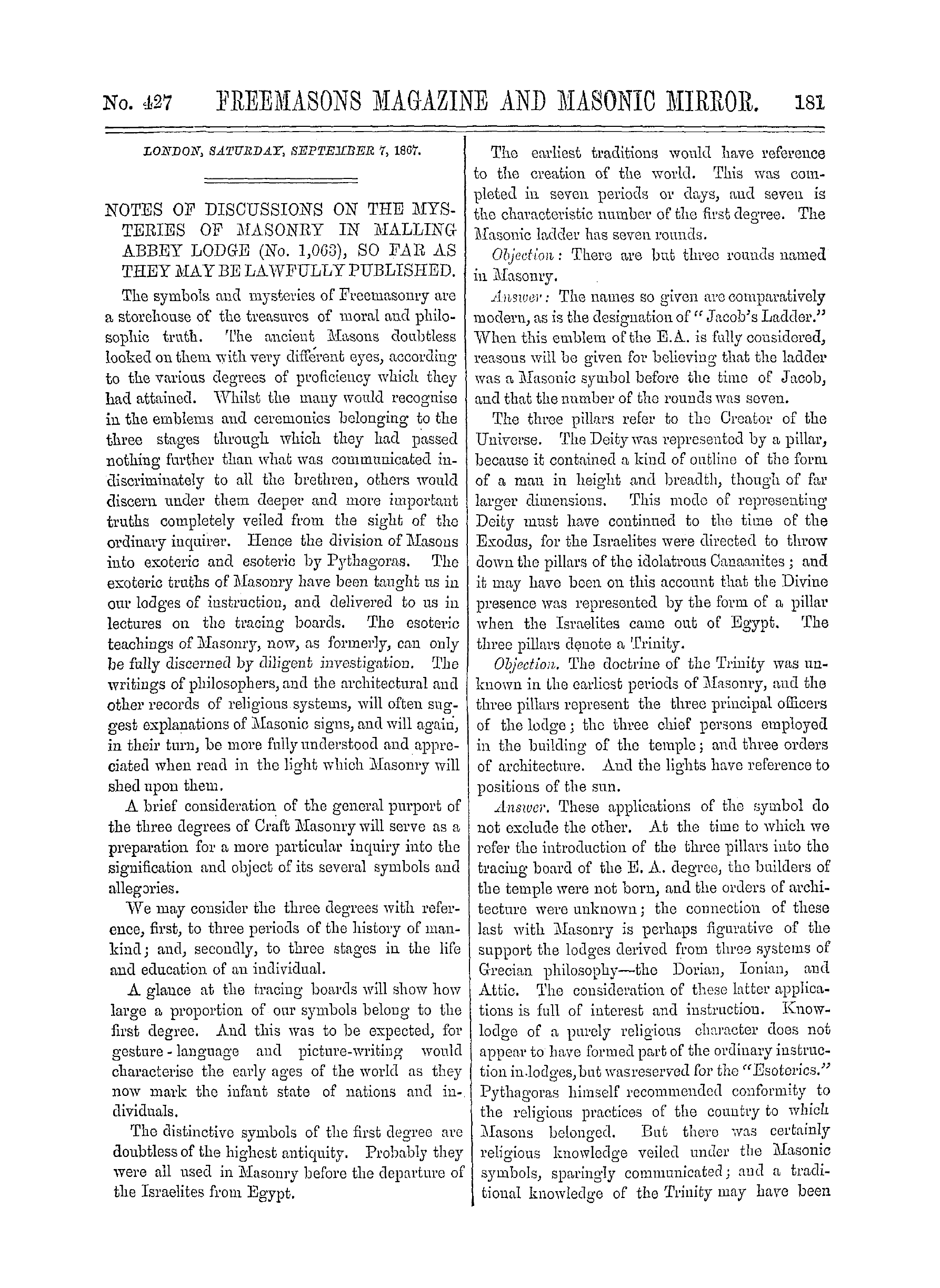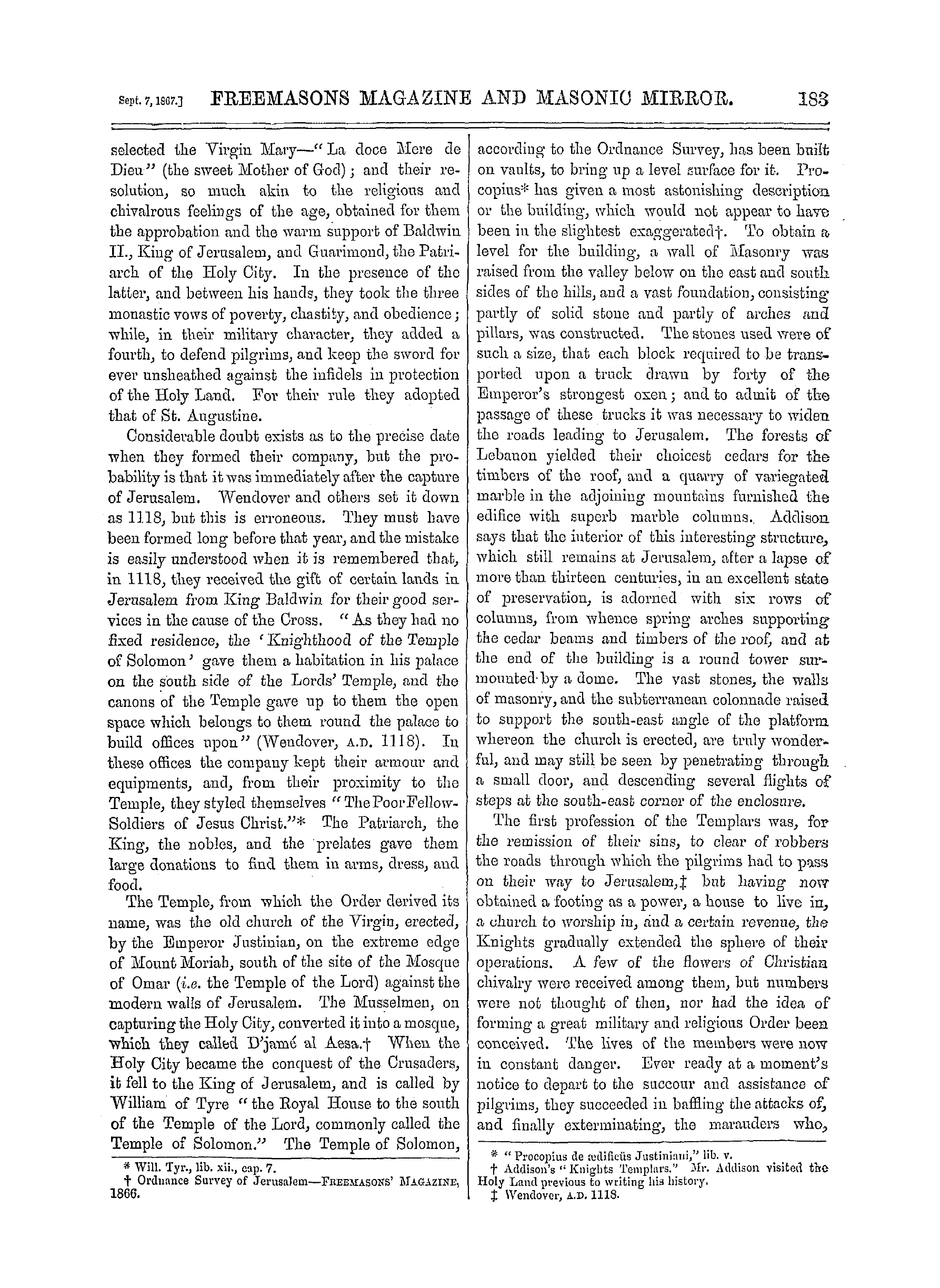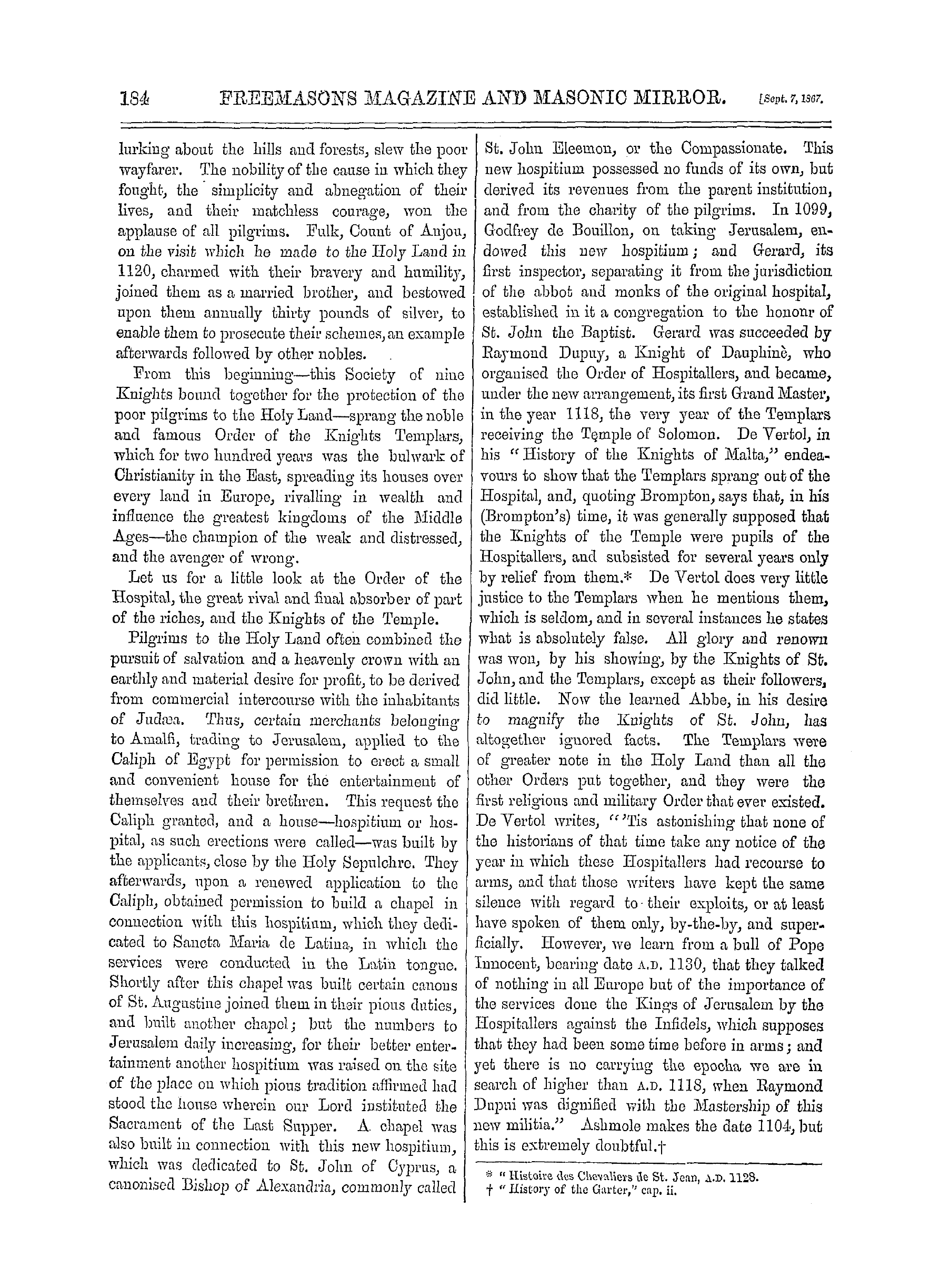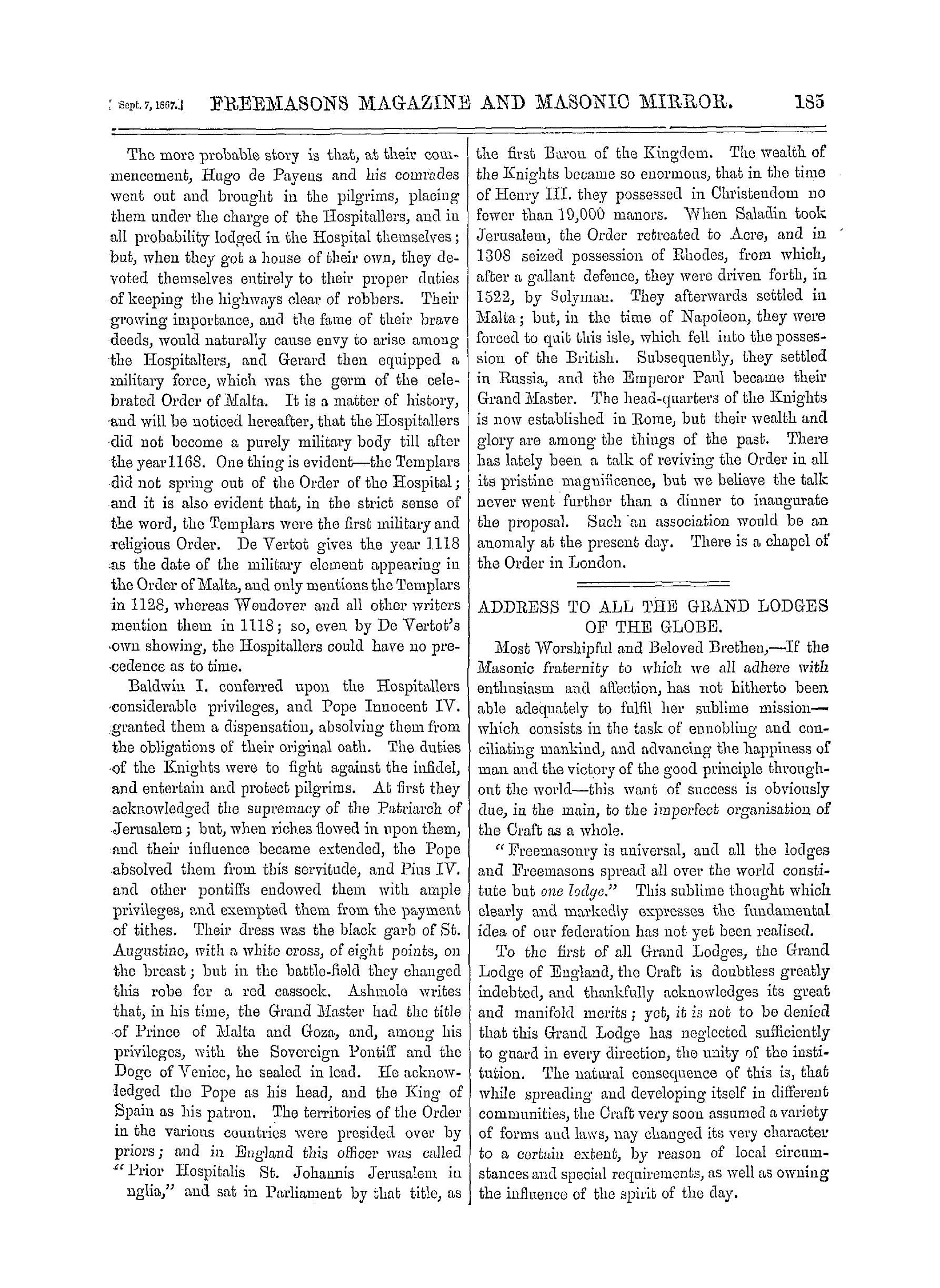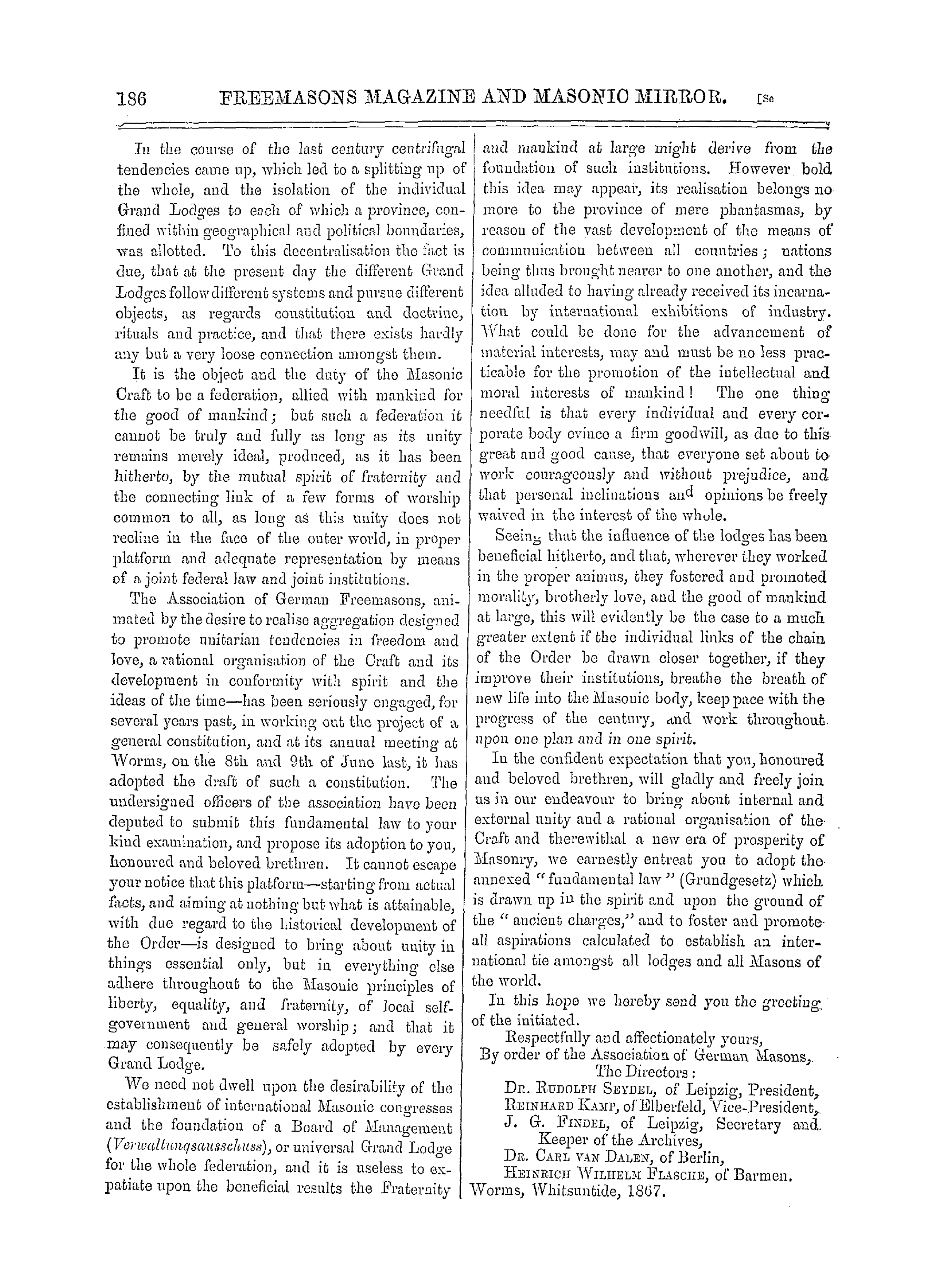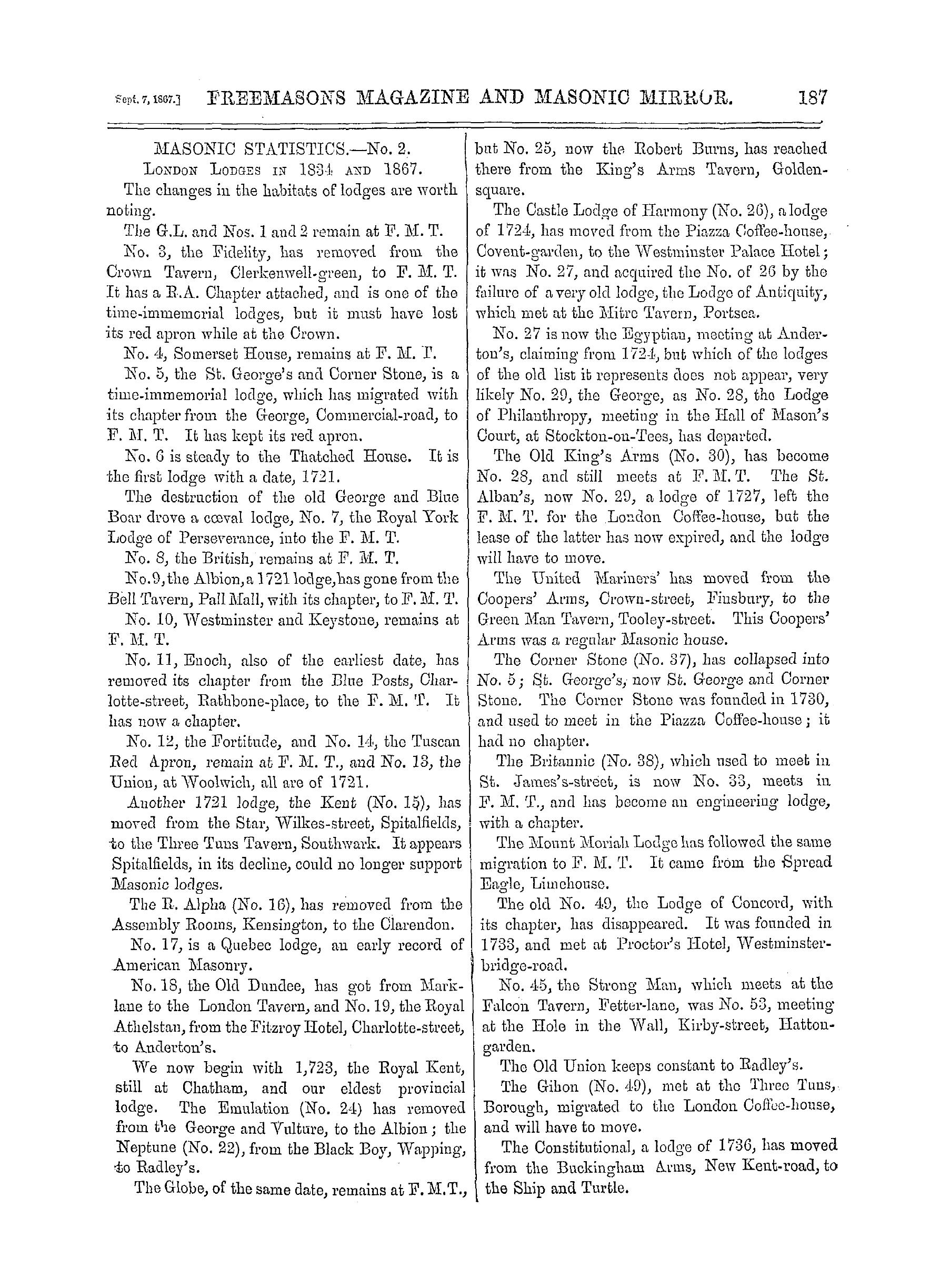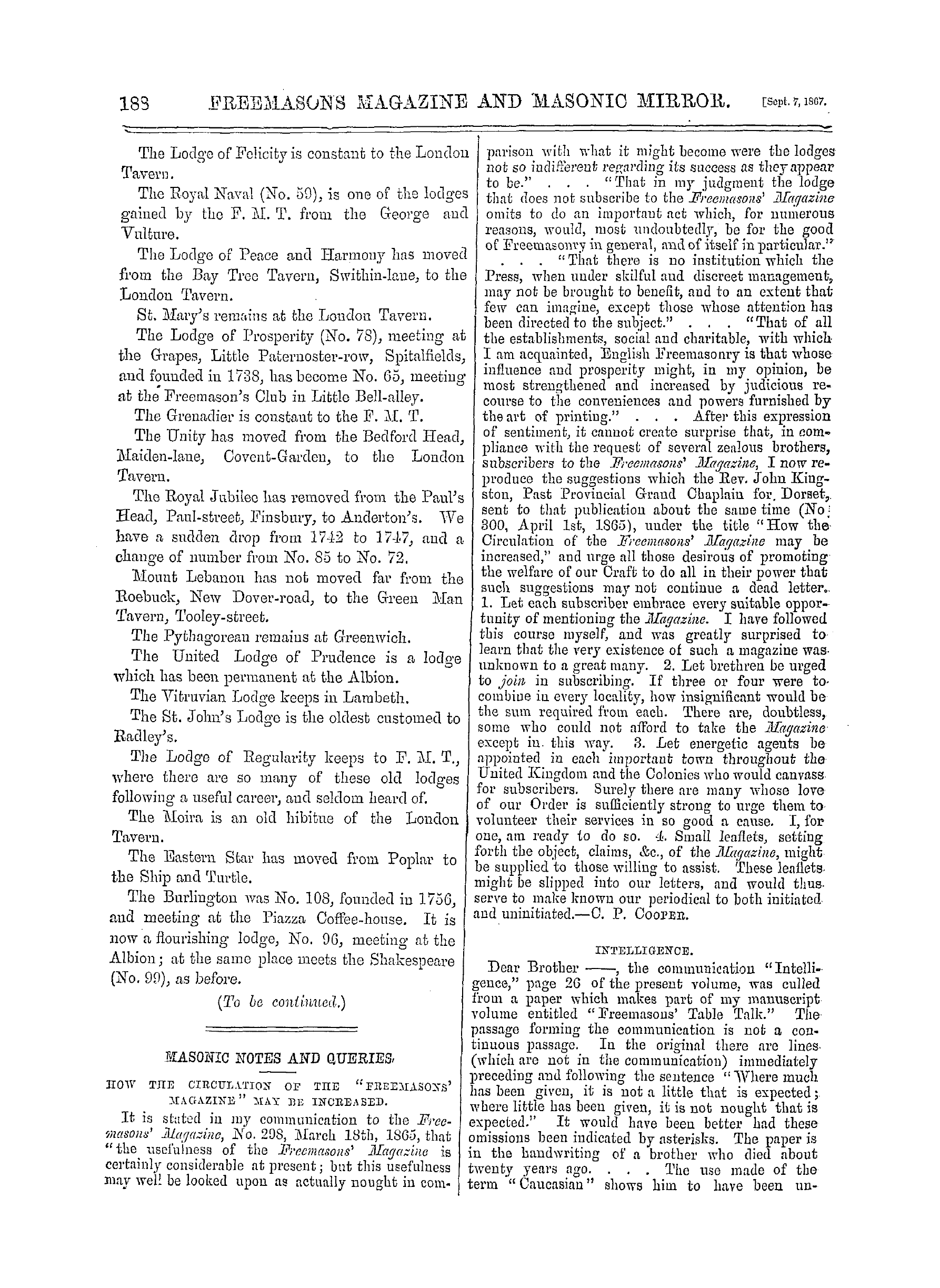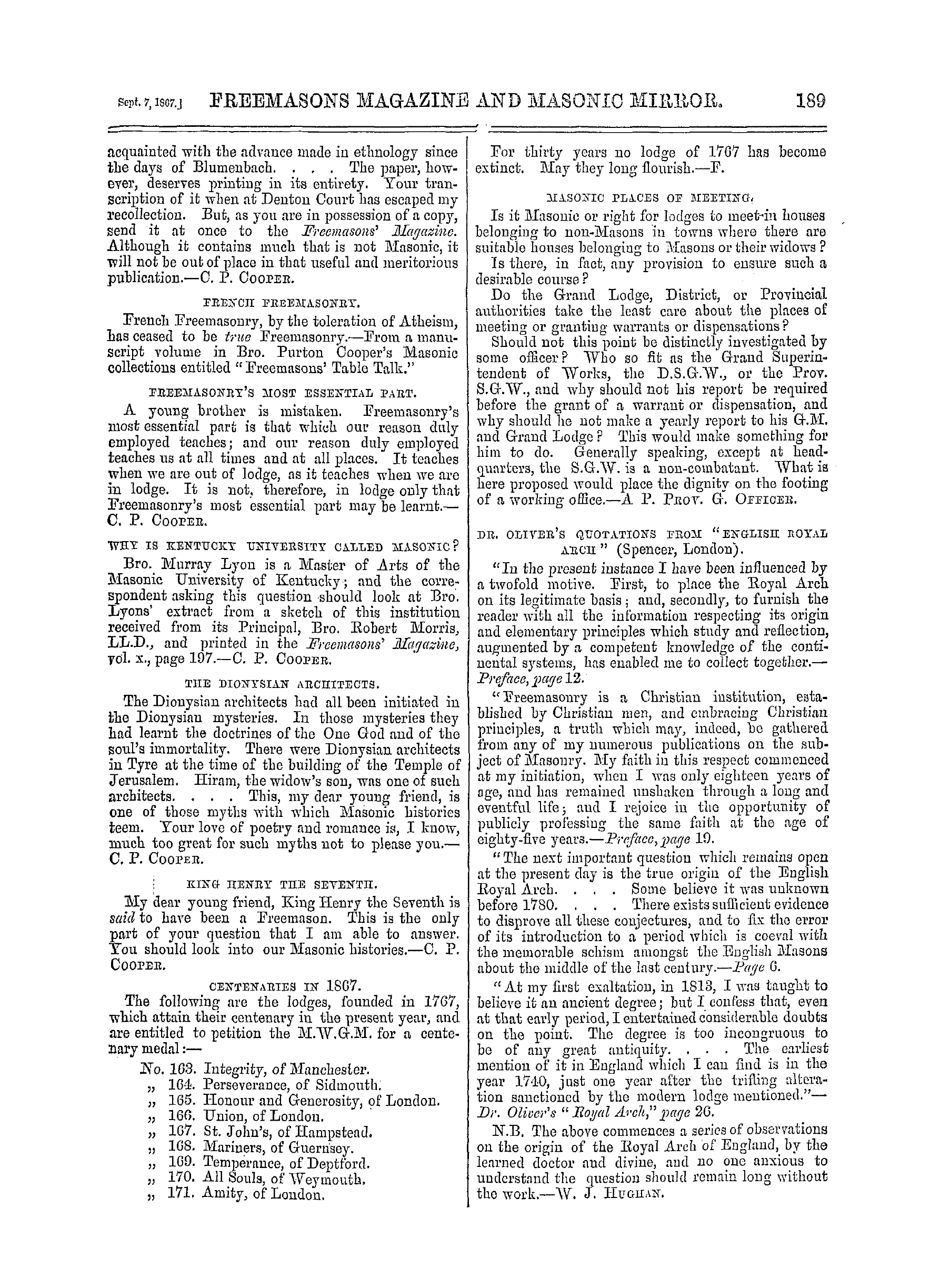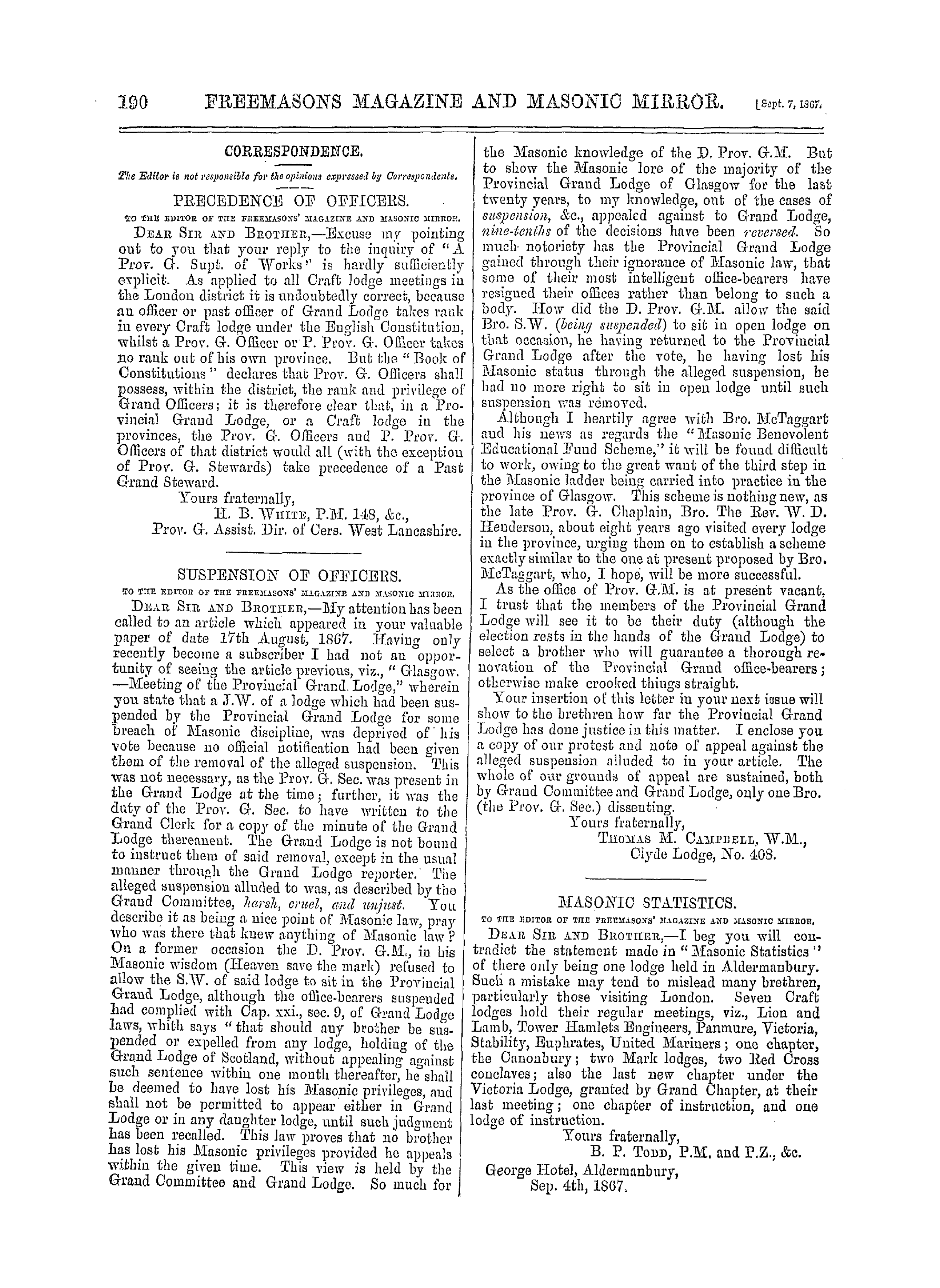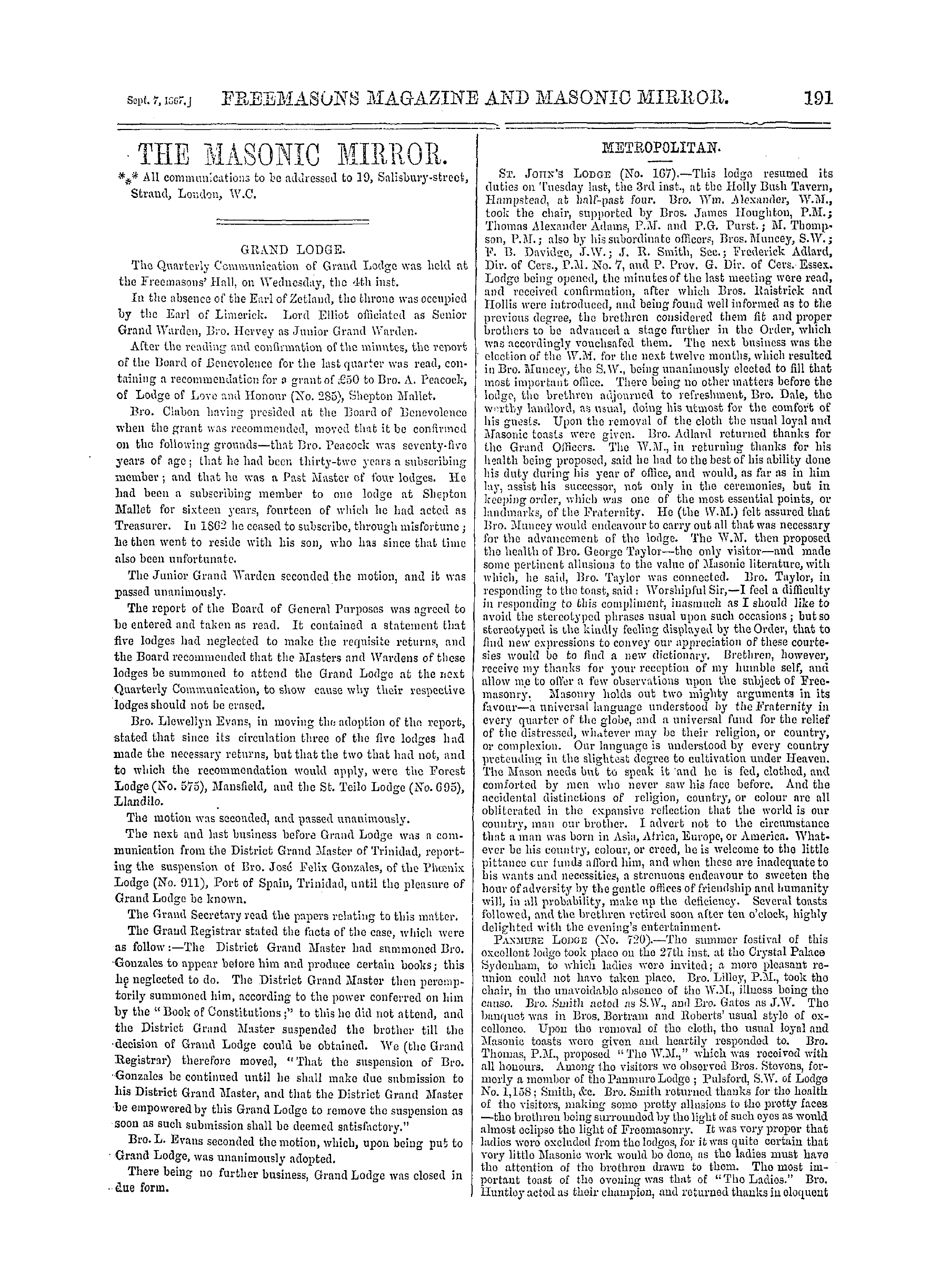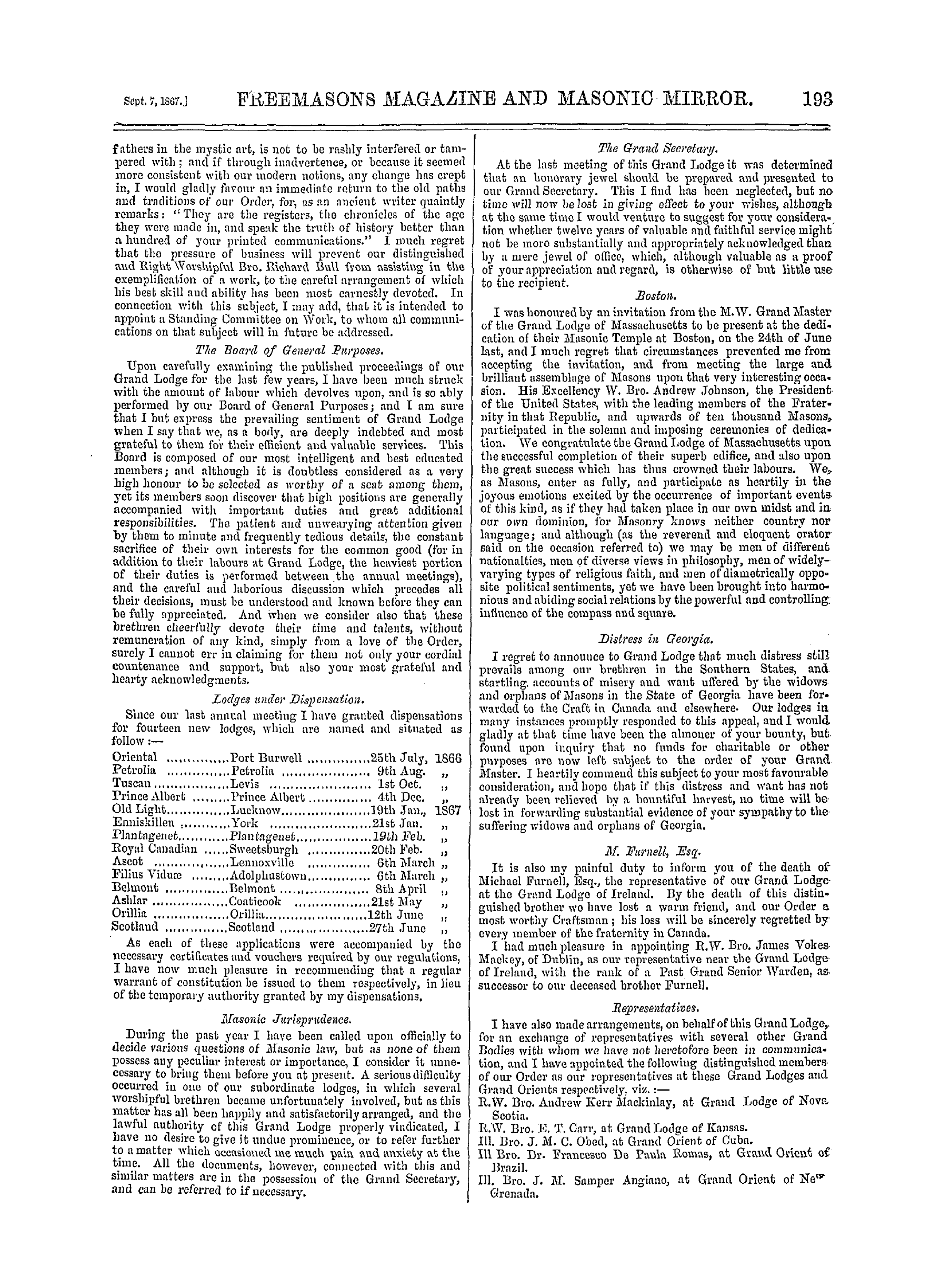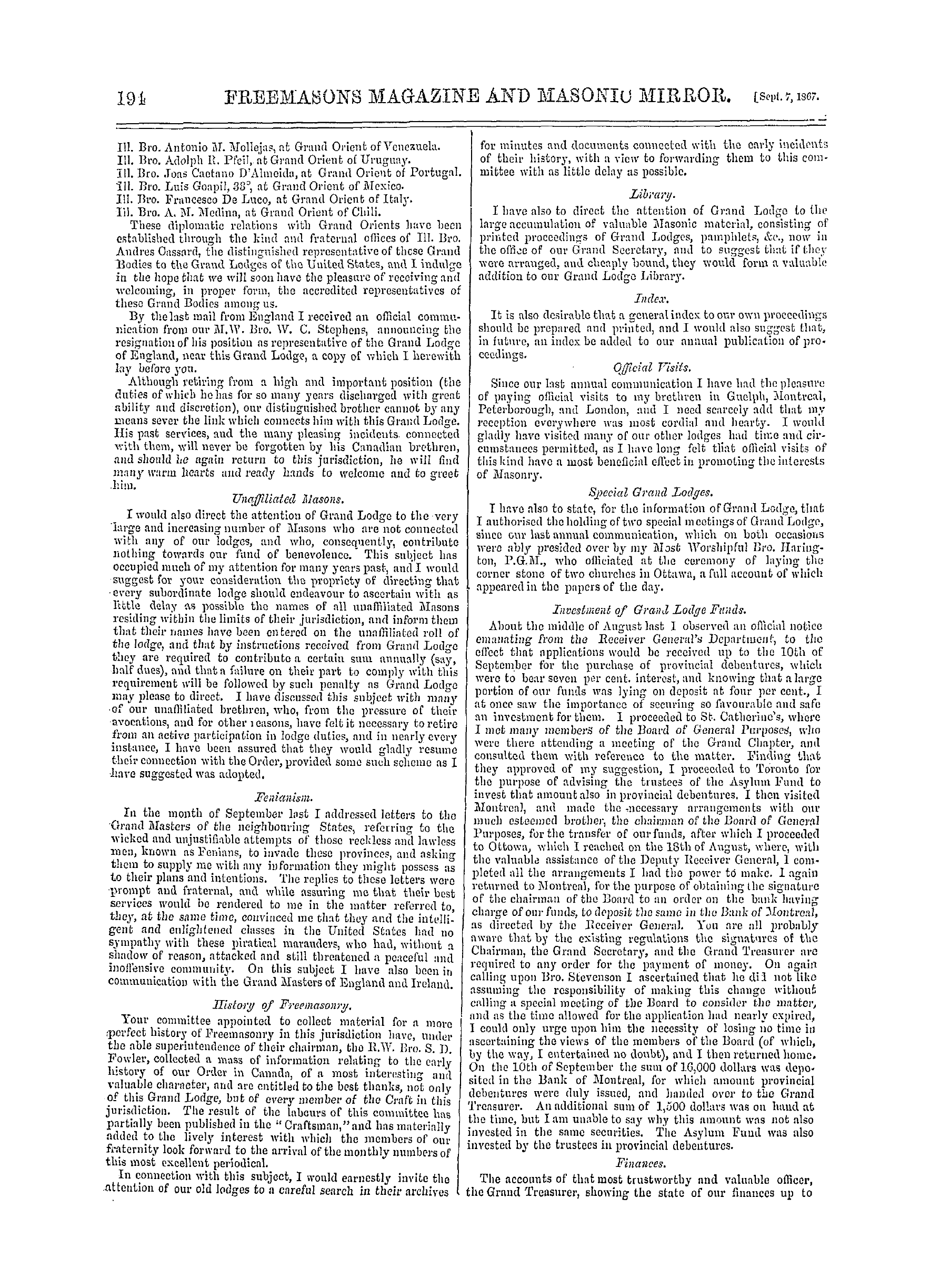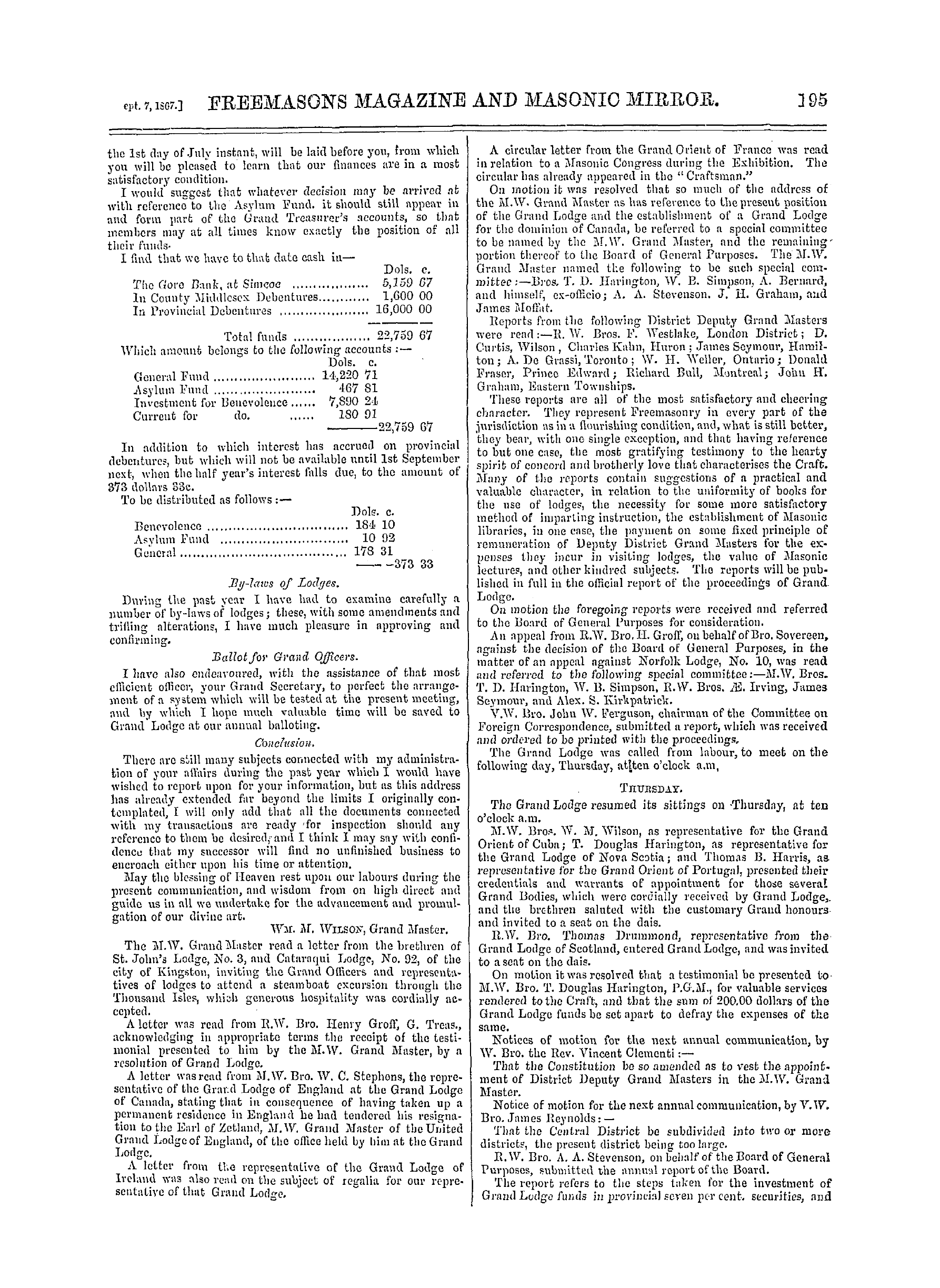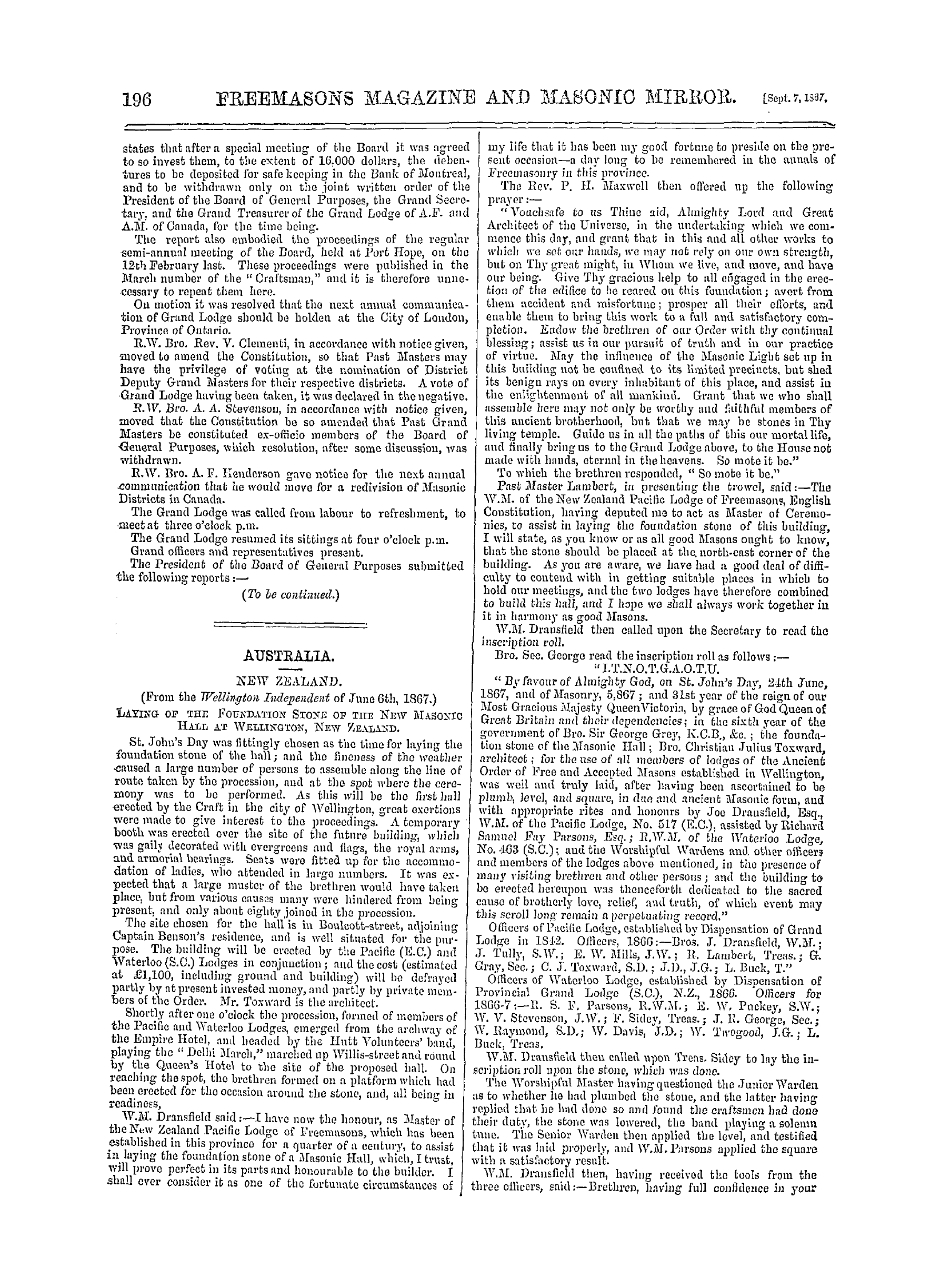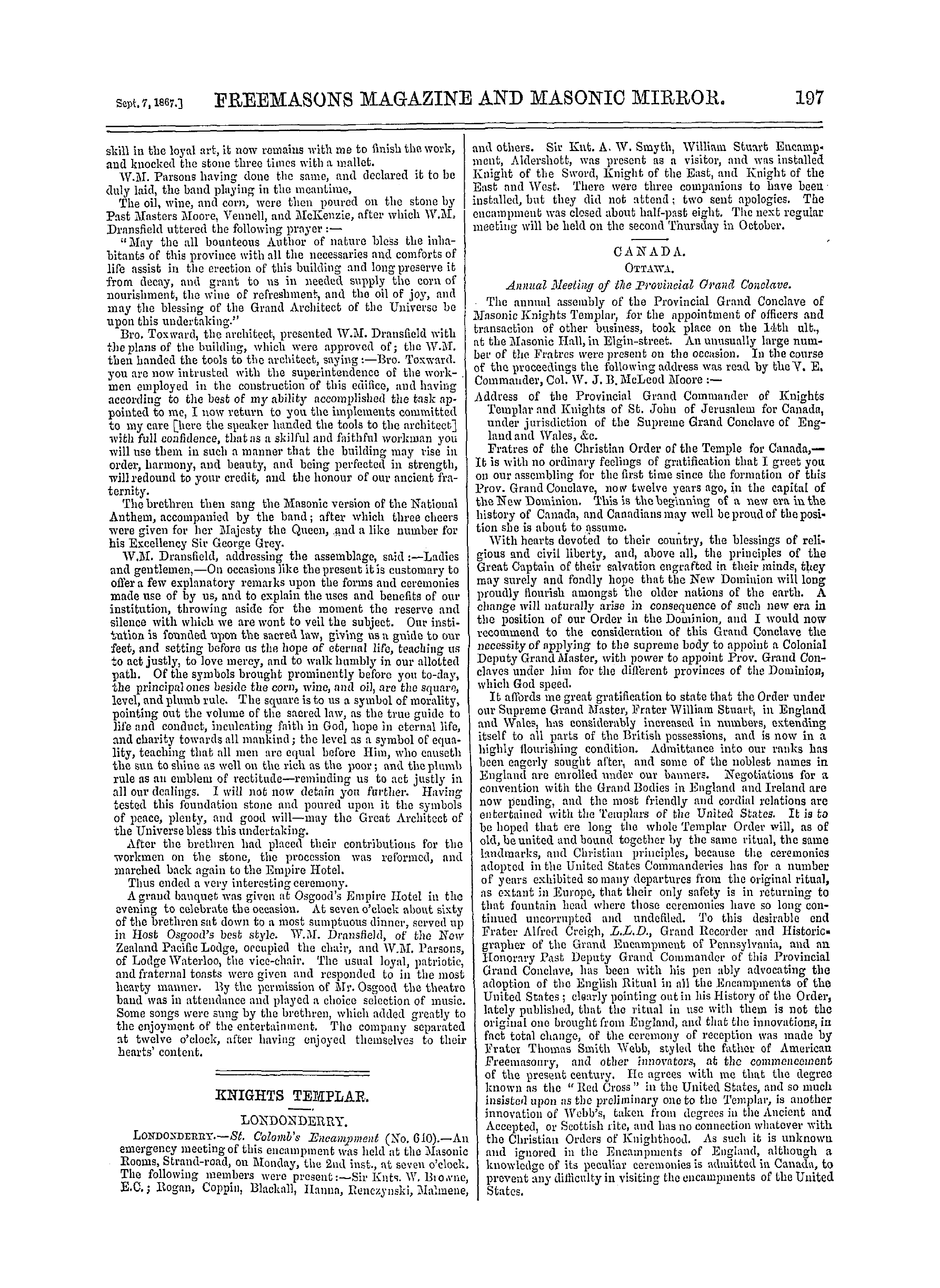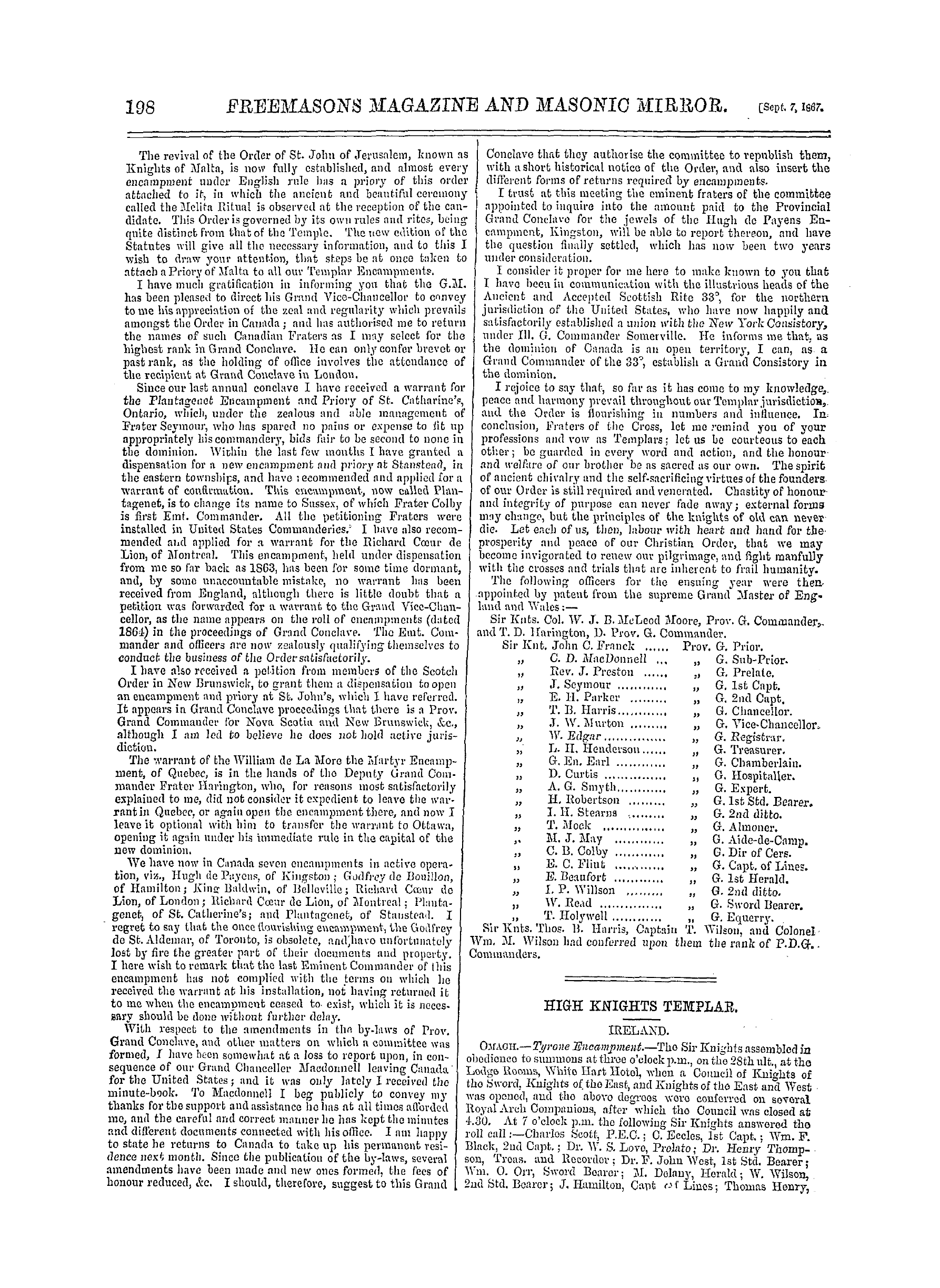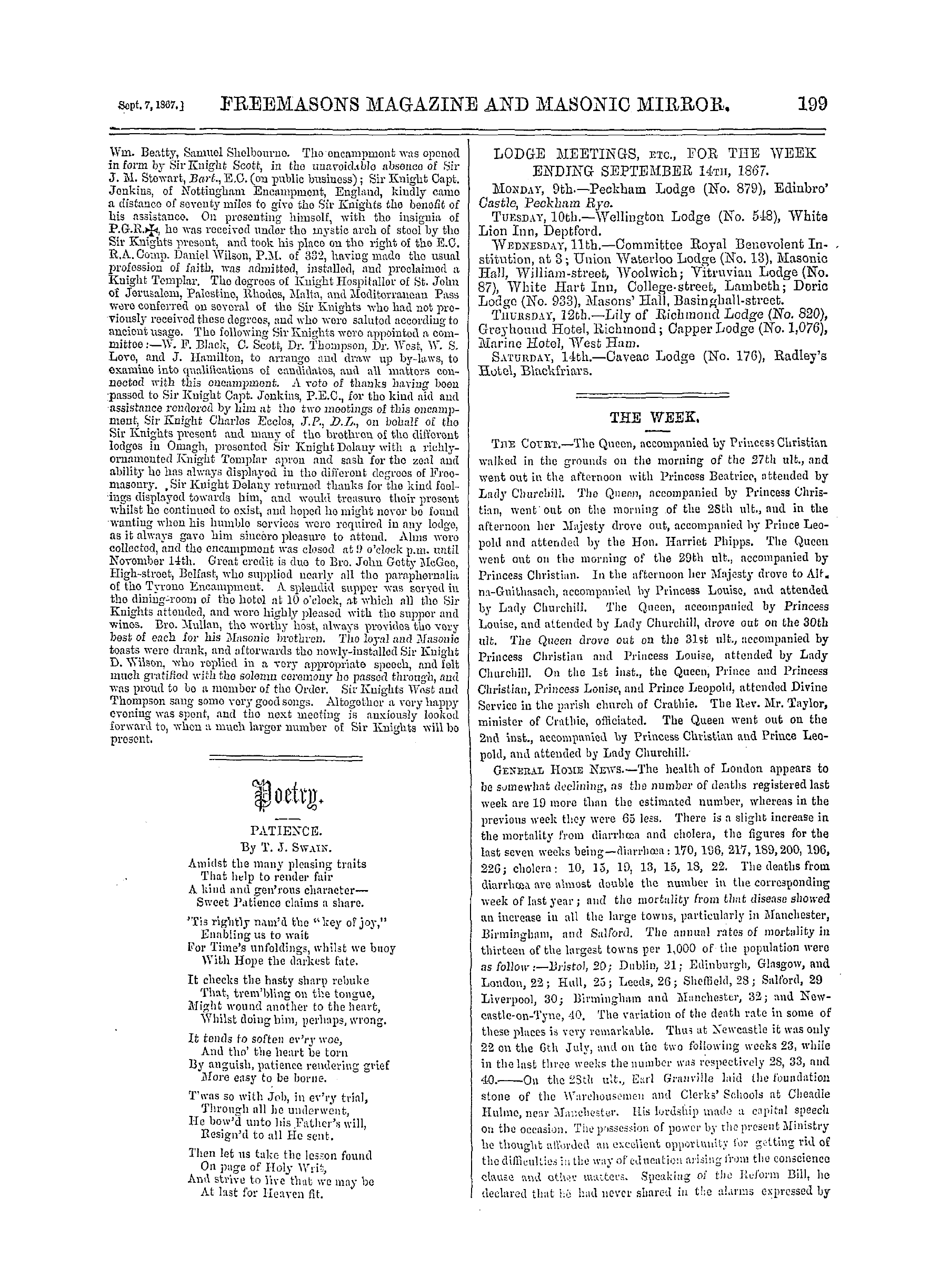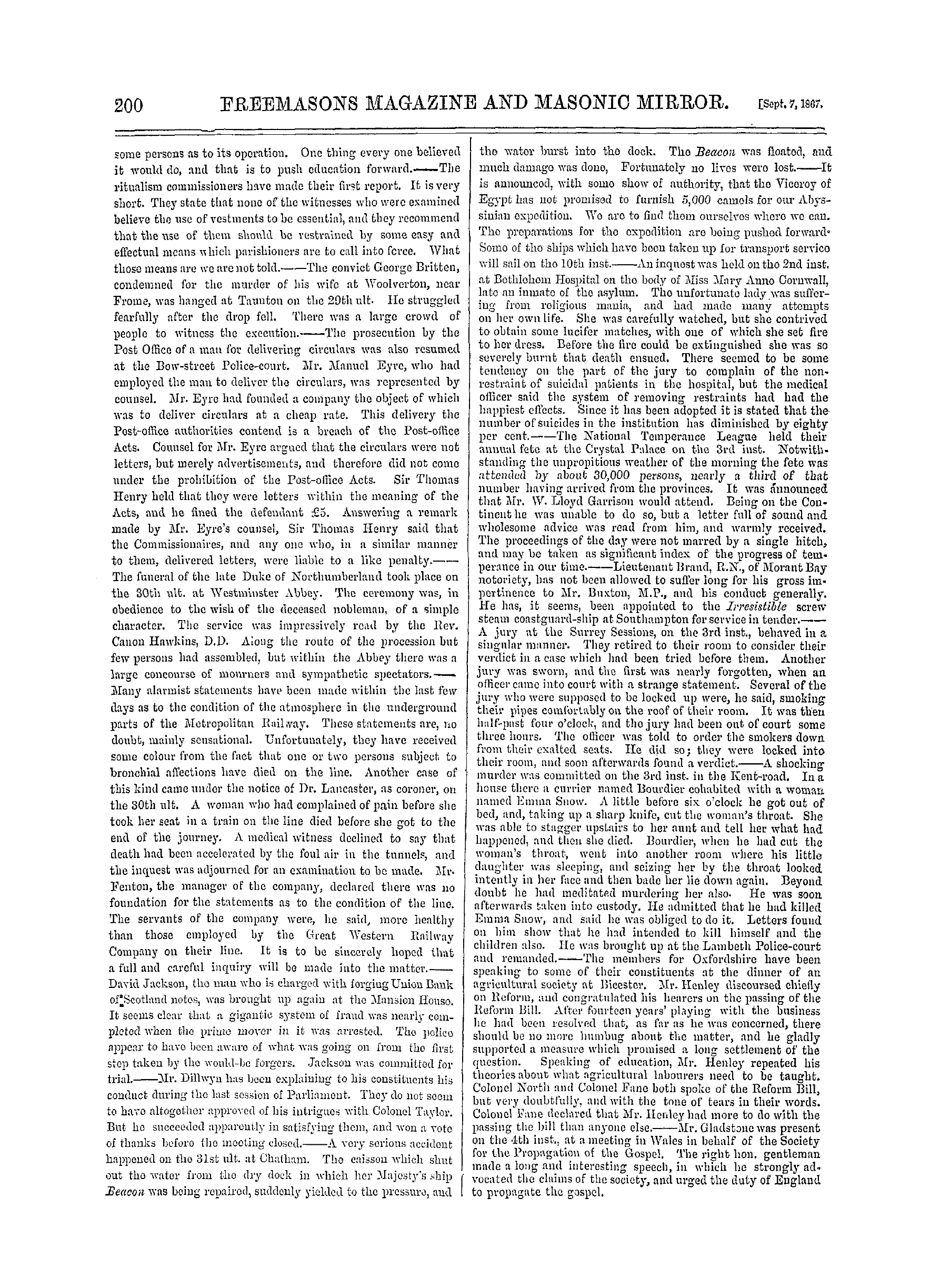Note: This text has been automatically extracted via Optical Character Recognition (OCR) software.
Ar00100
LONDON , SATURDAY , SEPTEMBER 7 , 1807 .
NOTES OF DISCUSSIONS ON THE MYSTERIES OF MASONRY IN MALLINCT ABBEY LODGE ( No . 1 , 063 ) , SO EAR AS THEY MAY BE LAWFULLY PUBLISHED . The symbols and mysteries of Freemasonry are
a storehouse of the treasures of moral and philosophic truth . The ancient Masons doubtless looked on them -with very different eyes , according to the various degrees of proficiency which they had attained . Whilst the many would recognise
in the emblems and ceremonies belonging to the three stages through ivhich they had passed nothing further than what was communicated indiscriminately to all the brethren , others would discern under them deeper and more important
truths completely veiled from the sight of the ordinary inquirer . Hence the division of Masons into exoteric and esoteric by Pythagoras . The esoteric truths of Masonry have been taught us in our lodges of instruction , and delivered to us in
lectures on the tracing boards . The esoteric teachings of Masonry , now , as formerly , can only be fully discerned by diligent investigation . The writings of philosophers , and the architectural and other records of religious systems , will often
suggest explanations of Masonic signs , and ivill again , in their turn , be more fully understood and appreciated when read in the light which Masonry will shed upon them .
A brief consideration of the general purport of the three degrees of Craft Masonry will serve as a preparation for a more particular inquiry into the signification and object of its several symbols and allegories .
We may consider the three degrees with reference , first , to three periods of the history of mankind ; and , secondly , to three stages in the life and education of an individual . A glance at the tracing boards will shoiv how
large a proportion of our symbols belong to the first degree . And this was to be expected , for gesture - language and picture-Avriting would characterise the early ages of the world as they noAv mark the infant state of nations and
individuals . The distinctive symbols of the first degree are doubtless of the highest antiquity . Probably they were ail used in Masonry before the departure of the Israelites from Egypt .
The earliest traditions would have reference to the creation of the world . This was completed in seven periods or days , and seven is the characteristic number of the first degree . The Masonic ladder has seven rounds .
Objection : There are but three rounds named iu Masonry . Answer : The names so given are comparatively modern , as is the designation of " Jacob's Ladder . " When this emblem of the E . A . is fully considered ,
reasons will be given for believing that the ladder was a Masonic symbol before the time of Jacob , and that the number of the rounds ivas seven . The three pillars refer to tho Creator of the Universe . The Deity was represented by a pillar , because it contained a kind of outline of the form
of a man in height and breadth , though of far larger dimensions . This mode of representing Deity must have continued to the time of the Exodus , for the Israelites were directed to throw down the pillars of the idolatrous Canaanites ; and
it may have been on this account that the Divine presence Avas represented by the form of a pillar when the Israelites came out of Egypt . The three pillars denote a Trinity . Objection . The doctrine of the Trinity was
unknown in the earliest periods of Masonry , and the three pillars represent the three principal officers of the lodge ; the three chief persons employed in the building of the temple ; and three orders of architecture . And the lights have reference to
positions of the sun . Answer . These applications of the symbol do not exclude the other . At the time to Avhich we
refer the introduction of the three pillars into the tracing board of the E . A . degree , the builders of the temple were not born , and the orders of architecture were unknown ; the connection of these last with Masonry is perhaps figurative of the
support the lodges derived from three systems of Grecian philosophy—the Dorian , Ionian , and Attic . The consideration of these latter applications is full of interest and instruction .
Knowlodge of a purely relig ious character does not appear to have formed part of the ordinary instruction in . loclo'es . but wasreserved for the "Esoterics . " Pythagoras himself recommended conformity to the religious practices of the country to which
Masons belonged . But there Avas certainly religious knowledge veiled under the Masonic symbols , sparingly communicated ; aud a traditional knowledge of the Trinity may have been
Note: This text has been automatically extracted via Optical Character Recognition (OCR) software.
Ar00100
LONDON , SATURDAY , SEPTEMBER 7 , 1807 .
NOTES OF DISCUSSIONS ON THE MYSTERIES OF MASONRY IN MALLINCT ABBEY LODGE ( No . 1 , 063 ) , SO EAR AS THEY MAY BE LAWFULLY PUBLISHED . The symbols and mysteries of Freemasonry are
a storehouse of the treasures of moral and philosophic truth . The ancient Masons doubtless looked on them -with very different eyes , according to the various degrees of proficiency which they had attained . Whilst the many would recognise
in the emblems and ceremonies belonging to the three stages through ivhich they had passed nothing further than what was communicated indiscriminately to all the brethren , others would discern under them deeper and more important
truths completely veiled from the sight of the ordinary inquirer . Hence the division of Masons into exoteric and esoteric by Pythagoras . The esoteric truths of Masonry have been taught us in our lodges of instruction , and delivered to us in
lectures on the tracing boards . The esoteric teachings of Masonry , now , as formerly , can only be fully discerned by diligent investigation . The writings of philosophers , and the architectural and other records of religious systems , will often
suggest explanations of Masonic signs , and ivill again , in their turn , be more fully understood and appreciated when read in the light which Masonry will shed upon them .
A brief consideration of the general purport of the three degrees of Craft Masonry will serve as a preparation for a more particular inquiry into the signification and object of its several symbols and allegories .
We may consider the three degrees with reference , first , to three periods of the history of mankind ; and , secondly , to three stages in the life and education of an individual . A glance at the tracing boards will shoiv how
large a proportion of our symbols belong to the first degree . And this was to be expected , for gesture - language and picture-Avriting would characterise the early ages of the world as they noAv mark the infant state of nations and
individuals . The distinctive symbols of the first degree are doubtless of the highest antiquity . Probably they were ail used in Masonry before the departure of the Israelites from Egypt .
The earliest traditions would have reference to the creation of the world . This was completed in seven periods or days , and seven is the characteristic number of the first degree . The Masonic ladder has seven rounds .
Objection : There are but three rounds named iu Masonry . Answer : The names so given are comparatively modern , as is the designation of " Jacob's Ladder . " When this emblem of the E . A . is fully considered ,
reasons will be given for believing that the ladder was a Masonic symbol before the time of Jacob , and that the number of the rounds ivas seven . The three pillars refer to tho Creator of the Universe . The Deity was represented by a pillar , because it contained a kind of outline of the form
of a man in height and breadth , though of far larger dimensions . This mode of representing Deity must have continued to the time of the Exodus , for the Israelites were directed to throw down the pillars of the idolatrous Canaanites ; and
it may have been on this account that the Divine presence Avas represented by the form of a pillar when the Israelites came out of Egypt . The three pillars denote a Trinity . Objection . The doctrine of the Trinity was
unknown in the earliest periods of Masonry , and the three pillars represent the three principal officers of the lodge ; the three chief persons employed in the building of the temple ; and three orders of architecture . And the lights have reference to
positions of the sun . Answer . These applications of the symbol do not exclude the other . At the time to Avhich we
refer the introduction of the three pillars into the tracing board of the E . A . degree , the builders of the temple were not born , and the orders of architecture were unknown ; the connection of these last with Masonry is perhaps figurative of the
support the lodges derived from three systems of Grecian philosophy—the Dorian , Ionian , and Attic . The consideration of these latter applications is full of interest and instruction .
Knowlodge of a purely relig ious character does not appear to have formed part of the ordinary instruction in . loclo'es . but wasreserved for the "Esoterics . " Pythagoras himself recommended conformity to the religious practices of the country to which
Masons belonged . But there Avas certainly religious knowledge veiled under the Masonic symbols , sparingly communicated ; aud a traditional knowledge of the Trinity may have been
